25 Luxury Living Room Interior Design Trends Collections
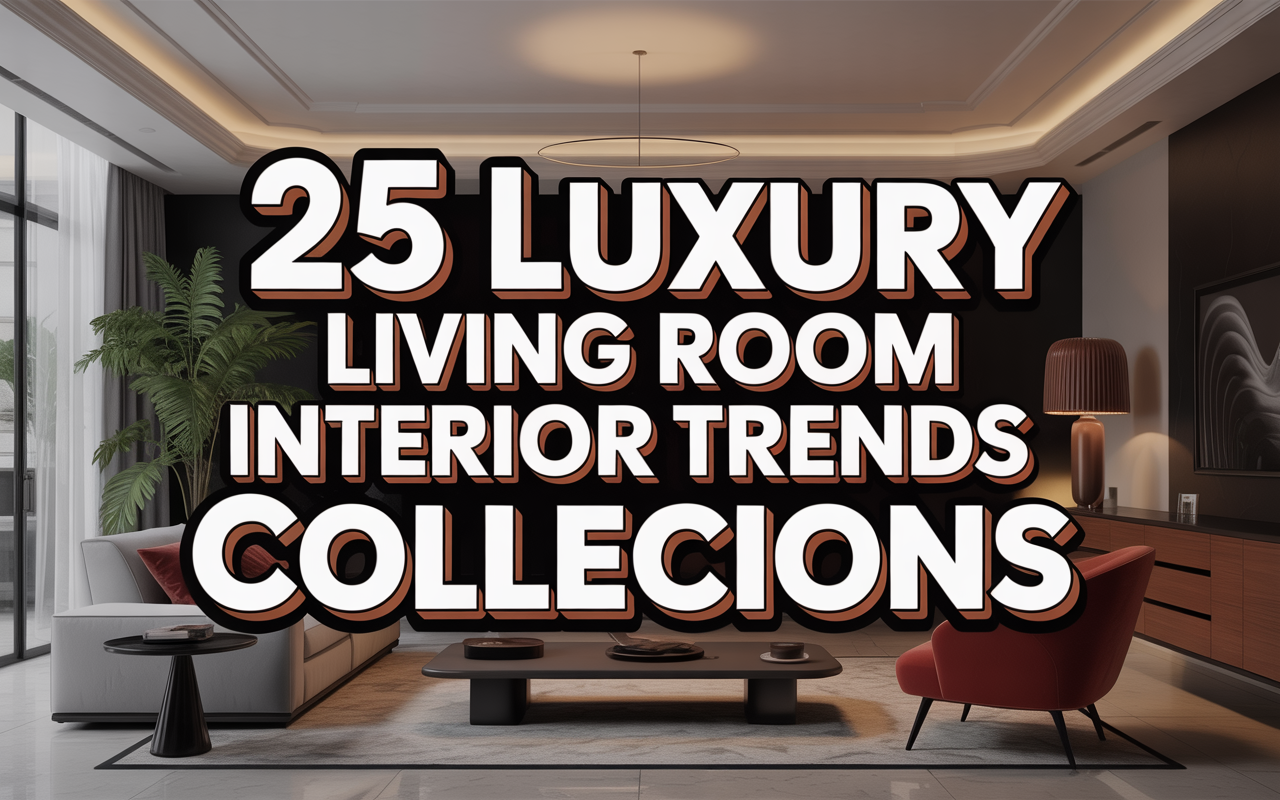
True luxury in a living room is about more than expensive furniture or brand names. It is about creating a complete sensory experience where beauty, comfort, and functionality meet. A well-designed luxury living room welcomes you with visual harmony, tactile richness, a pleasant scent in the air, and an overall feeling of ease. Every detail has a reason for being there, from the stitching on the sofa to the tone of the lighting. These 25 Luxury living room interior design trends show how professional designers are crafting spaces that look stunning in photographs yet feel even better when lived in.
Couture-Grade Upholstery for Everyday Pieces:
Luxury upholstery goes beyond off-the-shelf fabrics. Think of handwoven silks, Italian velvets, and Belgian linens, each with depth and irregularity that machine-made textiles cannot mimic. For example, Pierre Frey’s silk blend velvets catch the light differently at every angle, turning a simple sofa into a statement. These materials are more durable than they appear, especially when treated for stain resistance, making them ideal for everyday luxury living.
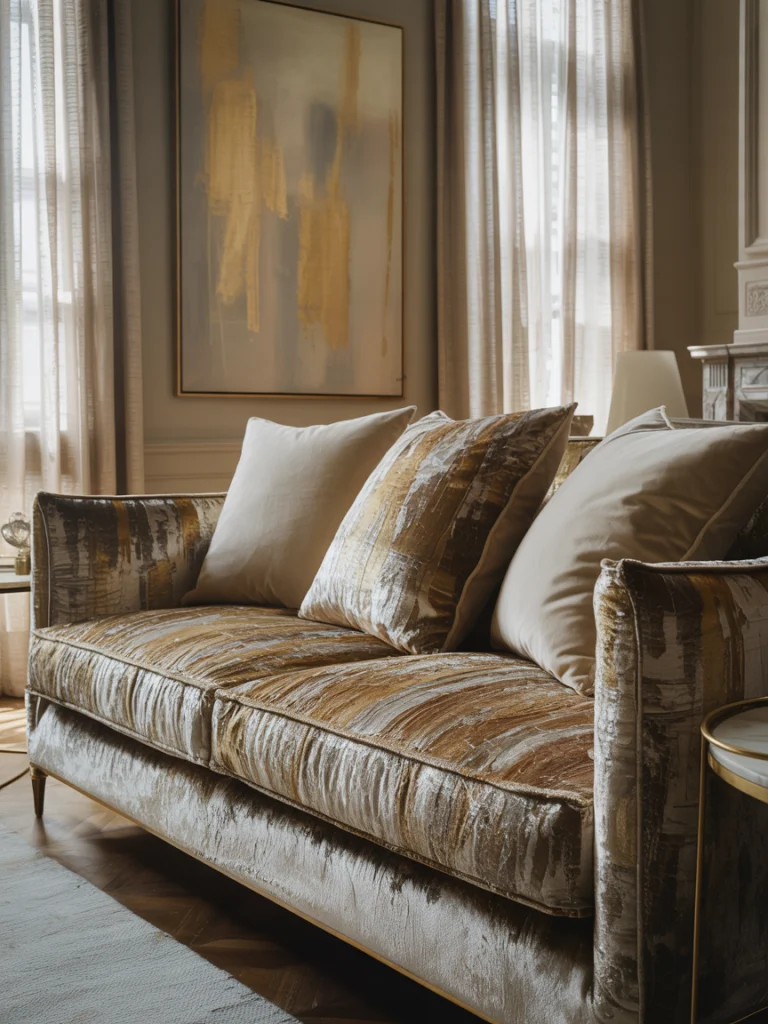
Sculptural Chandeliers with Layered Light Output:
A high-end chandelier should be more than a decorative ceiling piece; it should be a flexible lighting tool. Choose fixtures with hidden dimmable LEDs or adjustable arms so the same piece can provide bright, functional light or soft evening ambiance. Glass elements hand-blown by artisans add individuality, ensuring no two pieces are identical. This type of fixture becomes a focal point even when turned off.
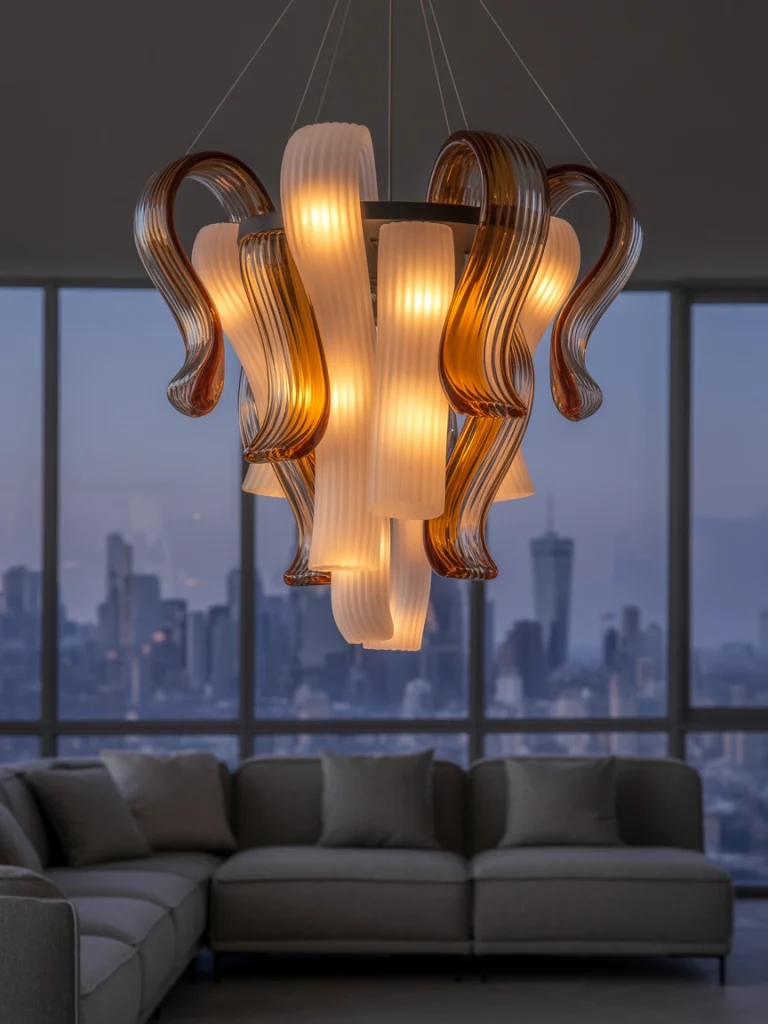
Hand-Carved Furniture Edges and Inlays:
Custom-made furniture with carved details or wood inlays adds subtle artistry to a living room. Look for Macassar ebony inlays, walnut marquetry, or even semi-precious stone detailing. These touches show craftsmanship that cannot be replicated by mass production, creating heirloom pieces that grow more beautiful with age.
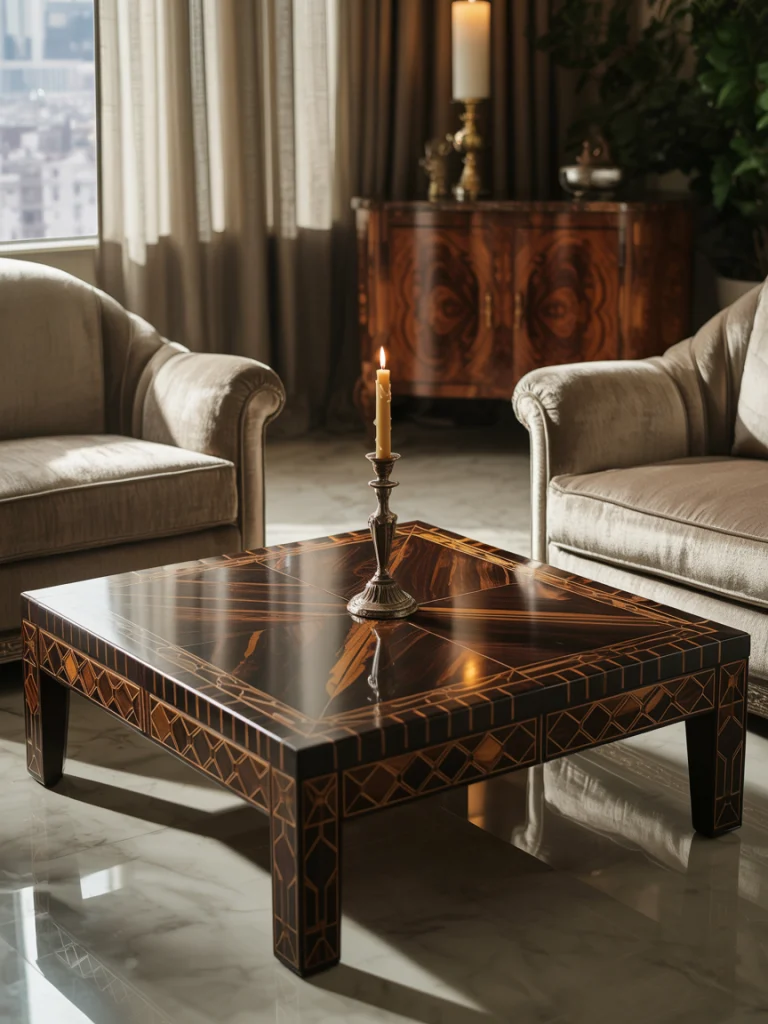
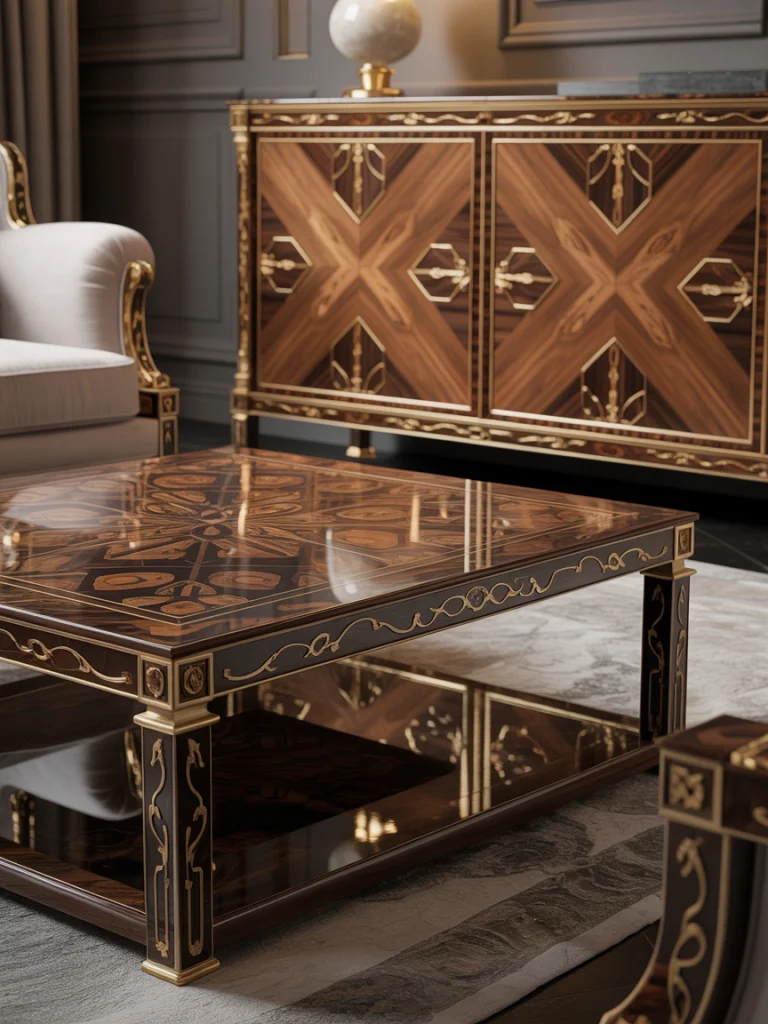
Textural Wall Panels for Depth:
Instead of flat painted walls, luxury design often uses upholstered panels in suede or leather, brushed metal sheets, or natural wood cladding. These materials soften acoustics, making conversation more pleasant, and add warmth to large, echo-prone rooms. Textural walls also serve as a dramatic backdrop for artwork.
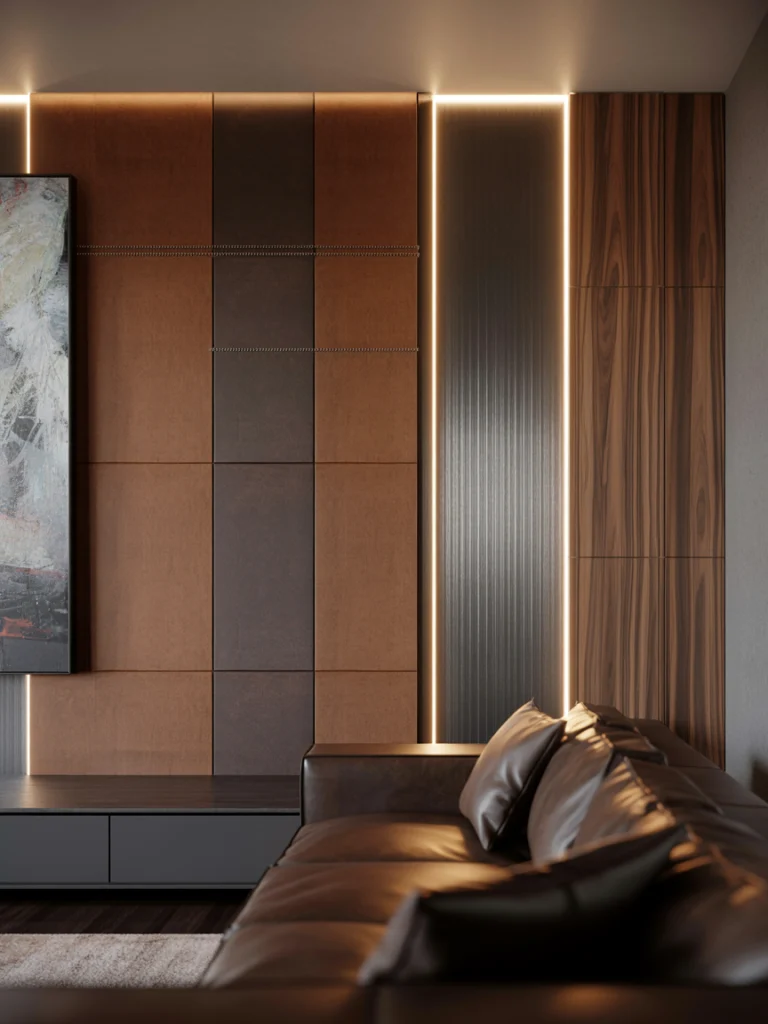
Gilded Accents in Subdued Finishes:
Gold detailing does not have to shout to be luxurious. Brushed or antiqued finishes offer warmth without glare, and they work with both modern and classic interiors. Apply them subtly to lamp bases, cabinet hardware, or picture frames for a unified, understated glow.
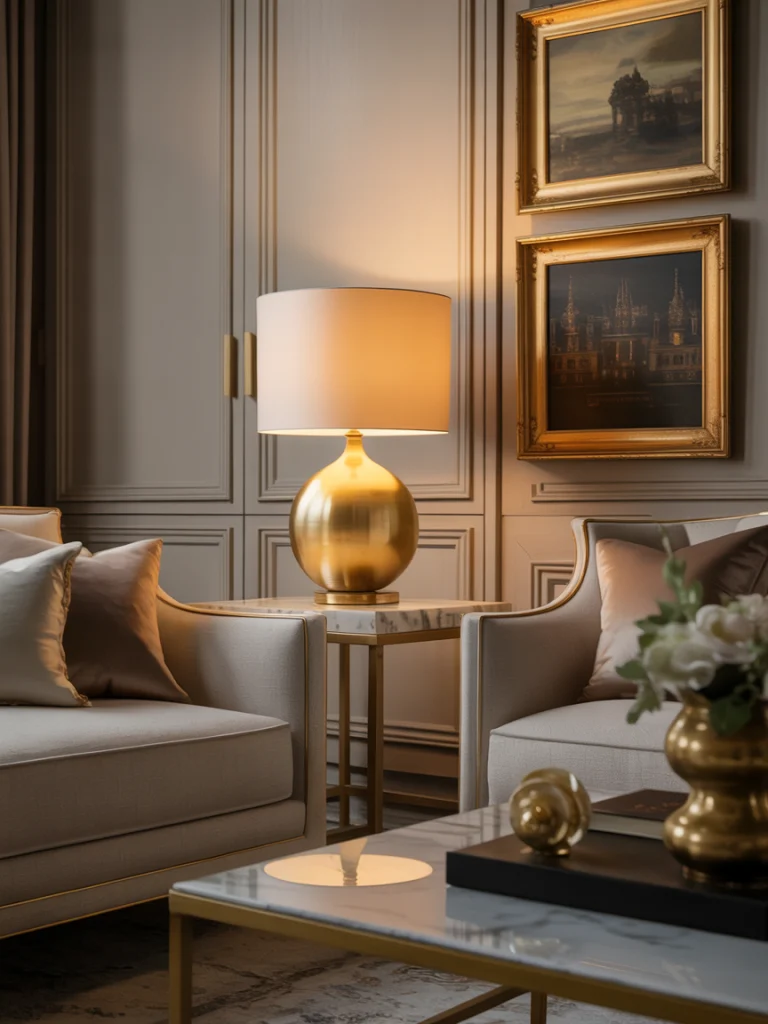
Oversized Silk and Wool Blend Rugs:
A large living room needs a rug big enough to anchor all seating. Custom rugs woven in silk and wool blends add softness underfoot and a slight sheen that catches light beautifully. Patterns can be tailored to your room, ensuring perfect scale and harmony with your palette.
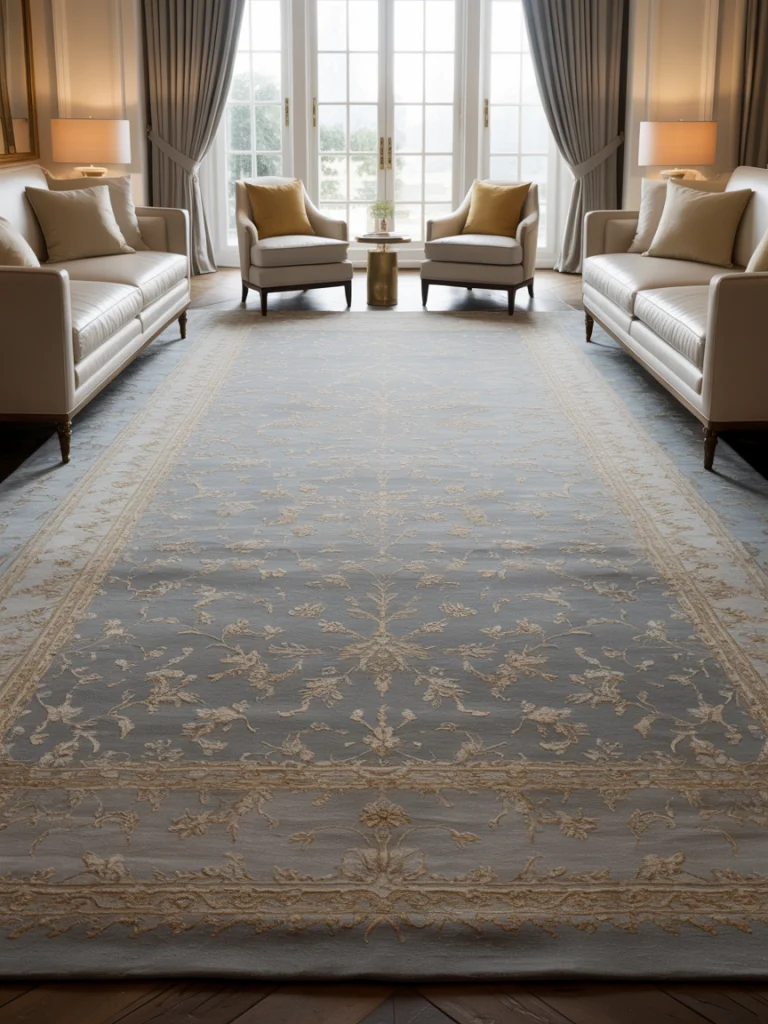
Concealed Climate Control Elements:
Air conditioning vents or radiators can disrupt the look of a luxury room. Hide them inside custom cabinetry, behind decorative grilles, or in the floor near the baseboards. This maintains visual flow while keeping the space comfortable year-round.
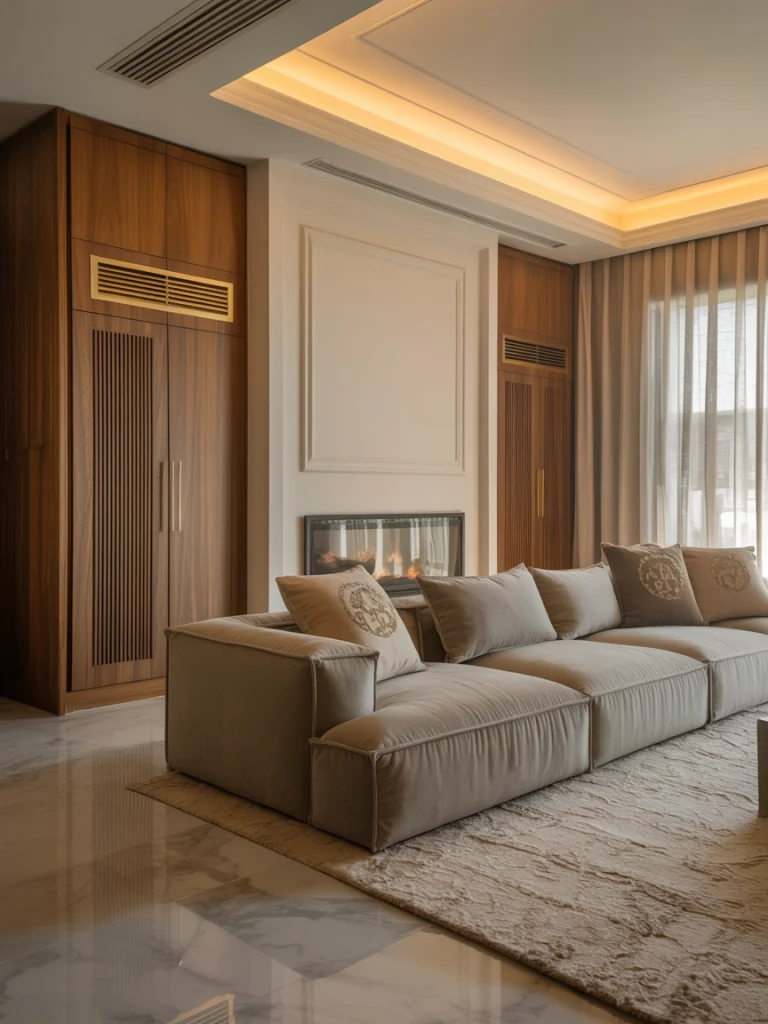
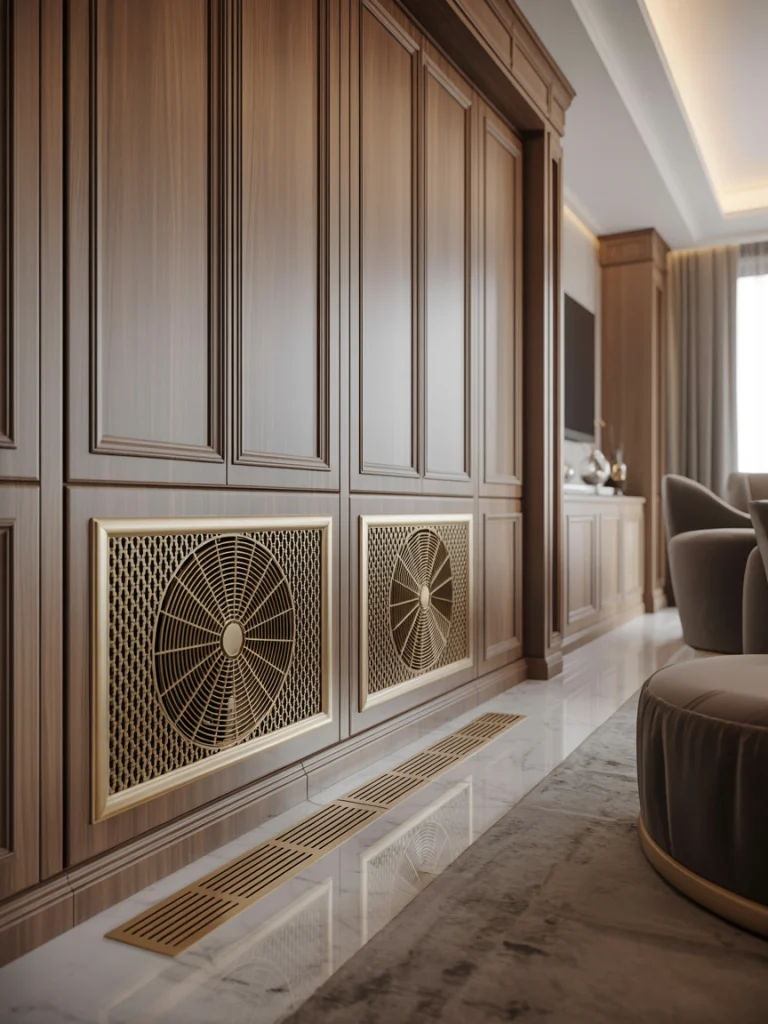
Layered Drapery with Weighted Hems:
Luxury curtains hang perfectly because they are weighted at the bottom. Combining sheer inner panels with heavier outer drapes allows full light control. Fabrics like silk taffeta or textured linen create depth, while custom lining preserves fabric quality over time.
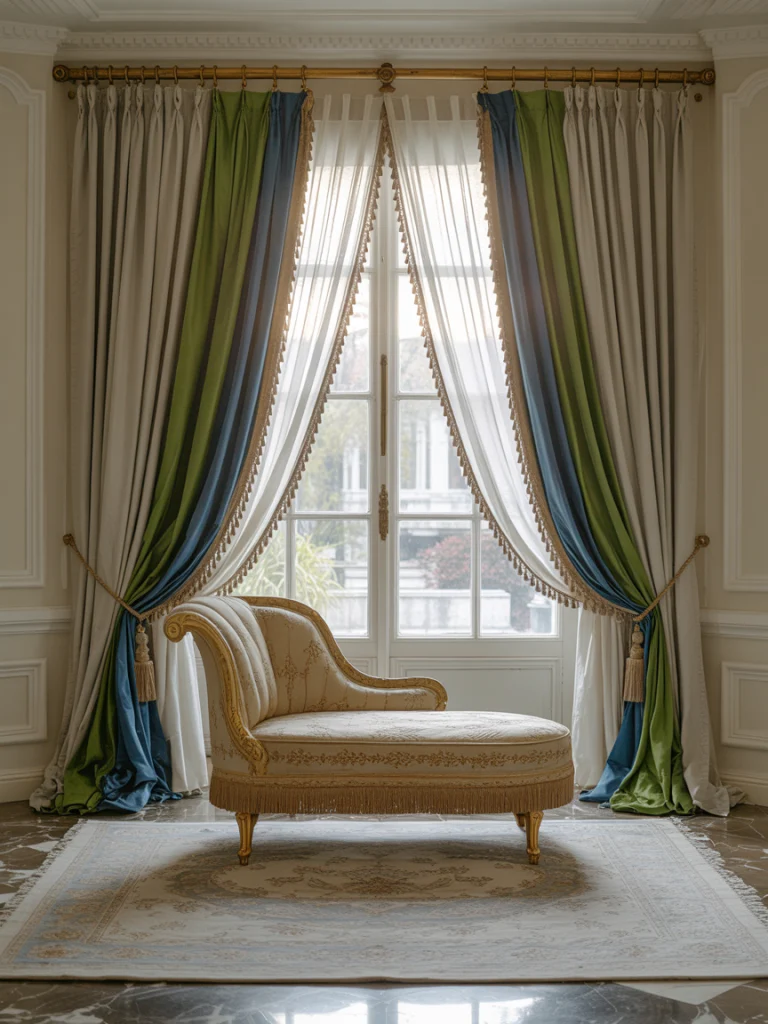
Deep-Toned Lacquered Surfaces:
High-gloss lacquer in jewel tones like petrol blue or oxblood reflects light in a way that adds mystery and sophistication. This finish works beautifully on cabinetry, console tables, or even an accent wall, creating a moody luxury perfect for evening entertaining.
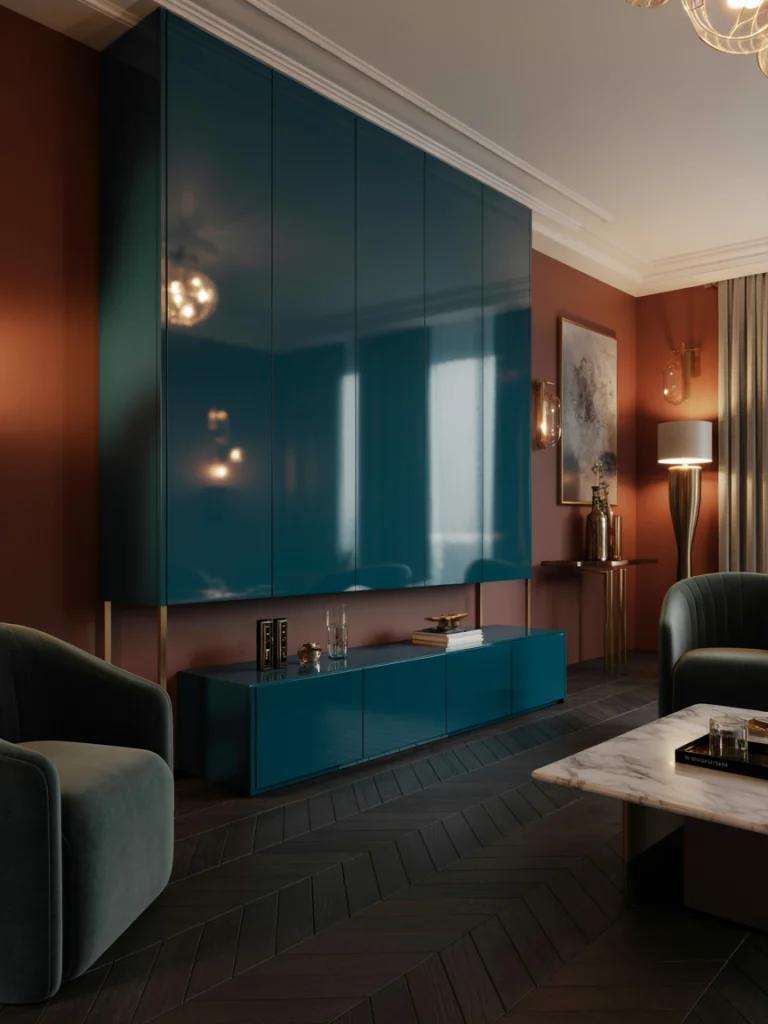
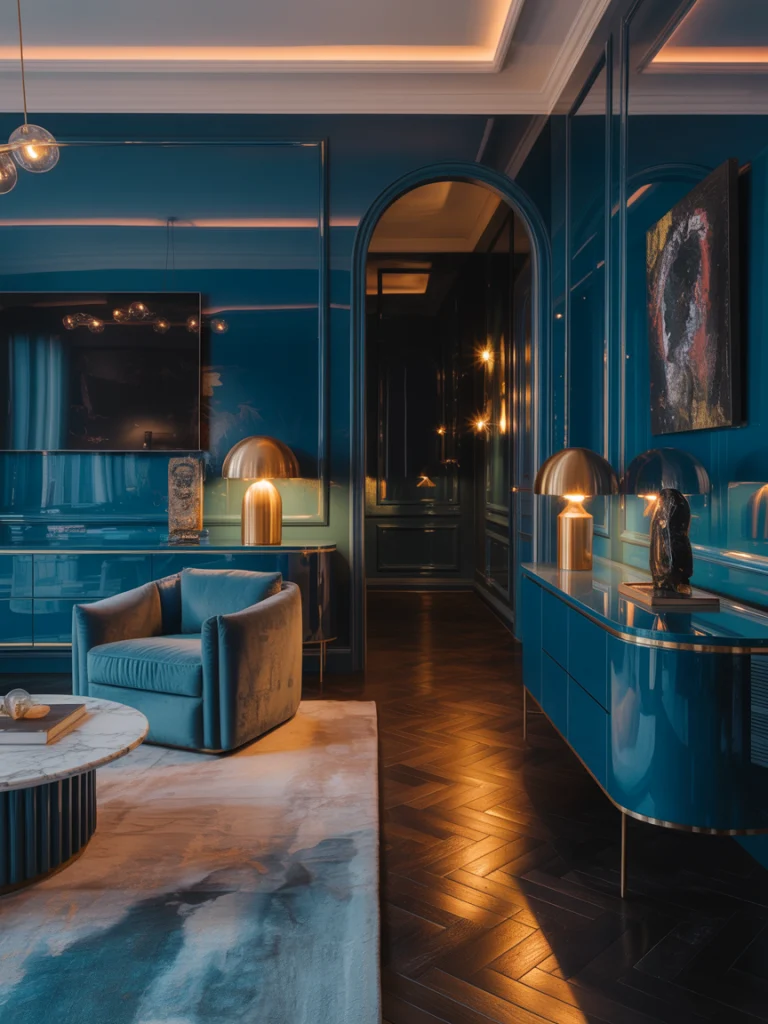
Biophilic Installations with Mature Indoor Trees:
Small plants are nice, but mature indoor trees like olive, ficus lyrata, or citrus varieties make a stronger statement. Placed in oversized ceramic or stone planters, they bring a sense of permanence and vitality to the space, improving air quality while adding architectural interest.
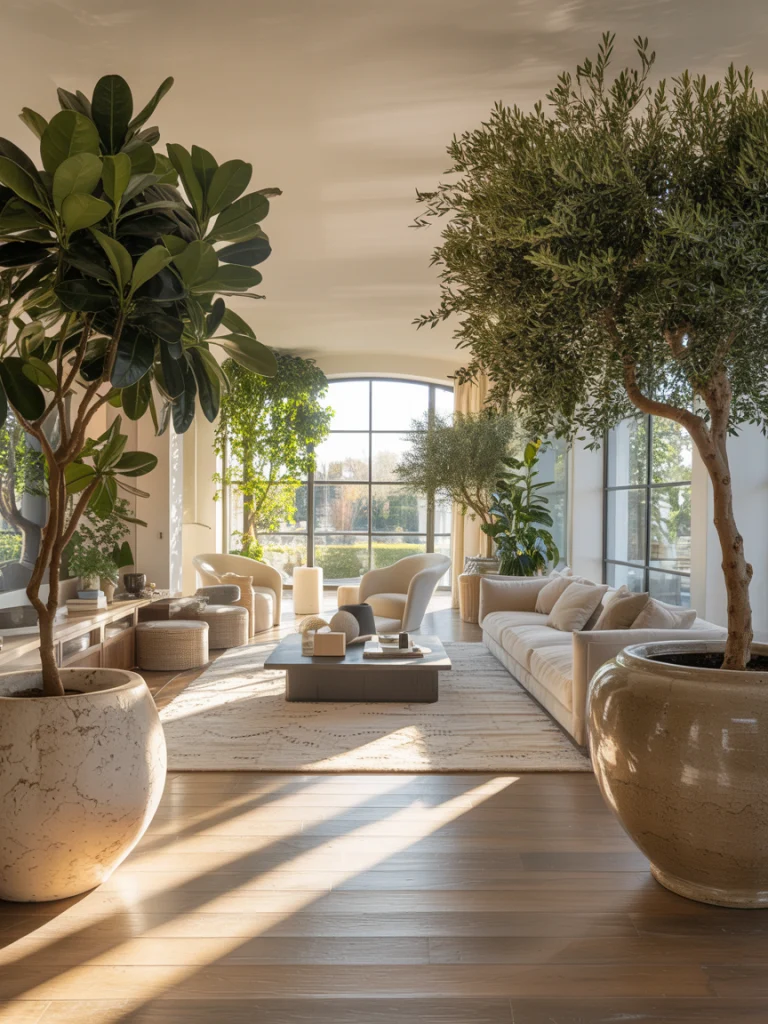
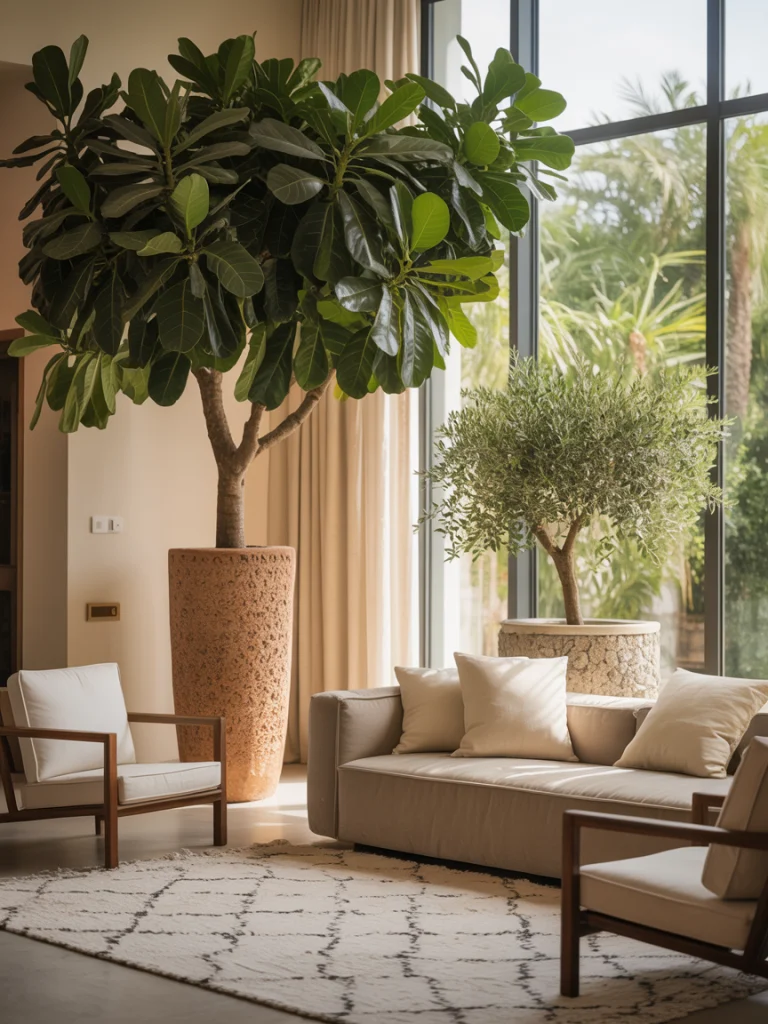
Invisible Tech Integration:
Luxury living rooms hide technology in plain sight. TVs can be tucked behind sliding art panels, projectors can drop from the ceiling, and speakers can be built into the walls. This keeps the focus on the design while still providing every modern convenience.
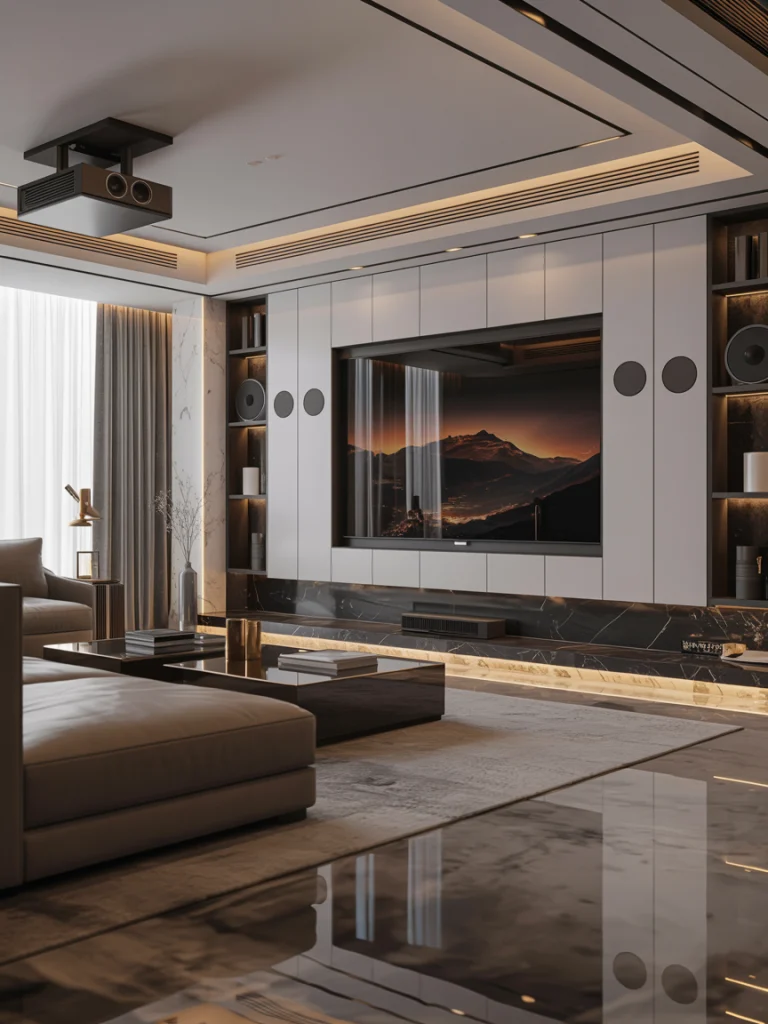
Backlit Built-Ins for a Museum Glow:
Integrated lighting in shelving highlights decorative objects like sculptures, art books, or crystal collections. Use warm LED strips with dimming capability to create a soft glow in the evenings. This not only displays your treasures but also adds depth and intimacy to the room.
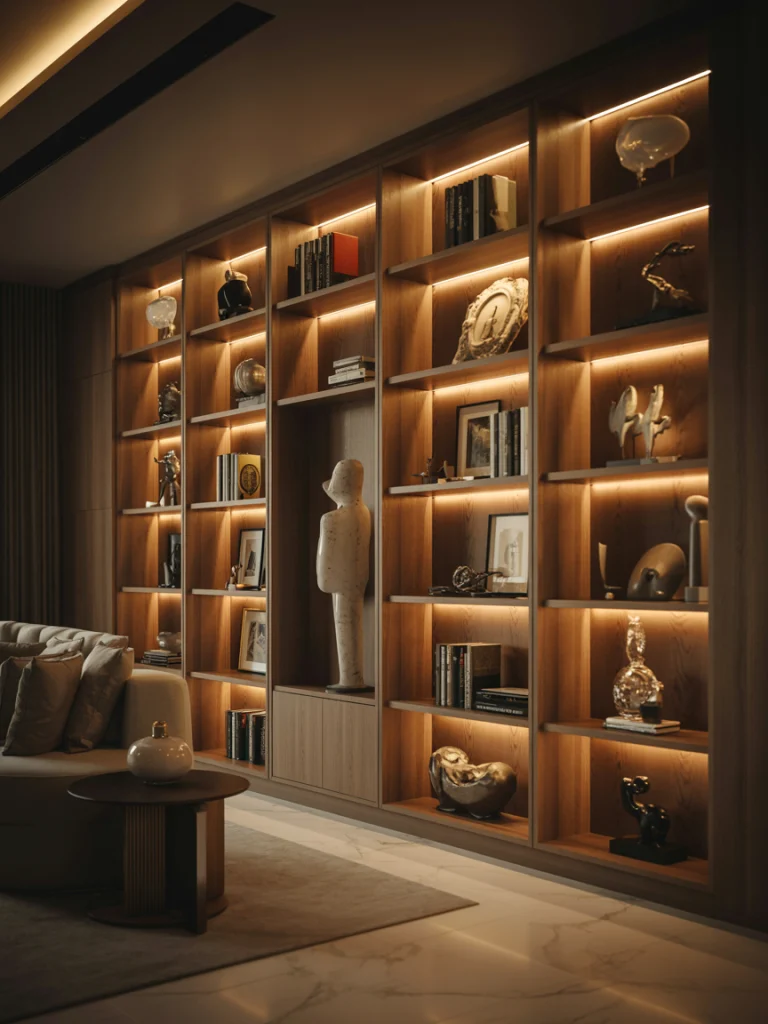
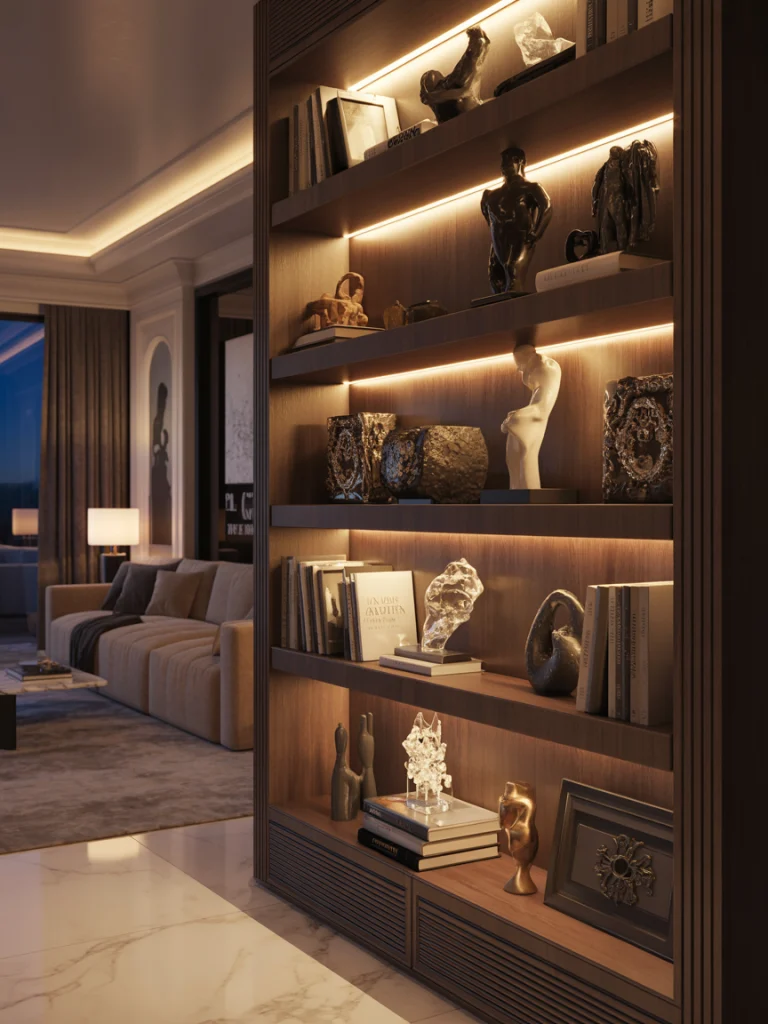
Antique Meets Modern Contrasts:
Pairing an ornate antique mirror with a clean-lined contemporary sofa adds personality and shows a curated, not catalog-bought, taste. The juxtaposition of styles gives a space energy and prevents it from feeling flat or overly matched.
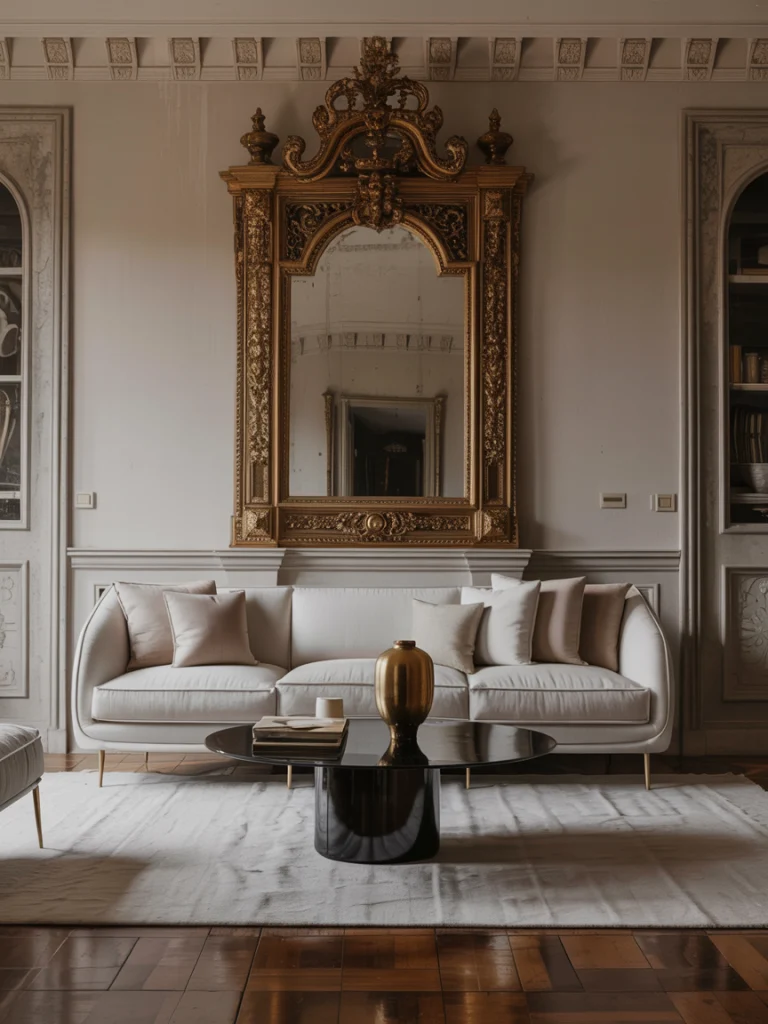
Commissioned Textile Artworks:
Fabric-based art such as handwoven tapestries, embroidered silk panels, or quilted wall hangings adds both visual and tactile interest. These pieces absorb sound, soften large spaces, and tell a story of craftsmanship. Commissioning a custom work ensures your piece is truly one-of-a-kind.
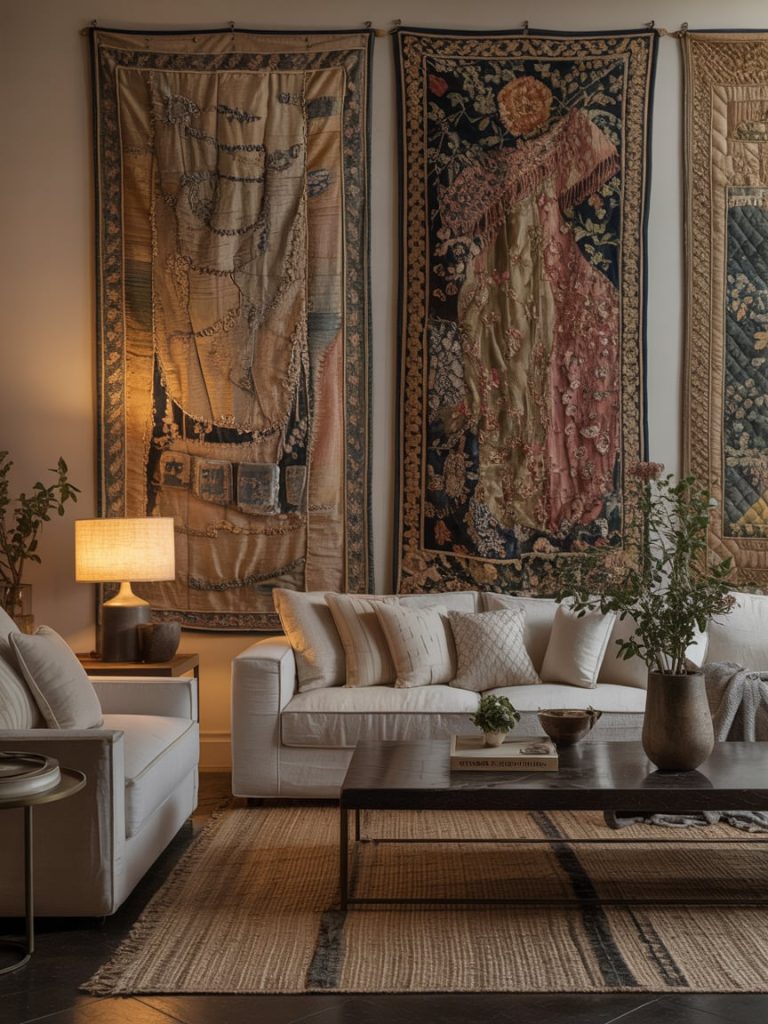
Book-Matched Marble Fireplace Surrounds:
Using mirrored marble slabs so the veining creates symmetrical patterns turns a fireplace into a showpiece. This method highlights the natural artistry of the stone and can be paired with metal trims for a refined, architectural feel.
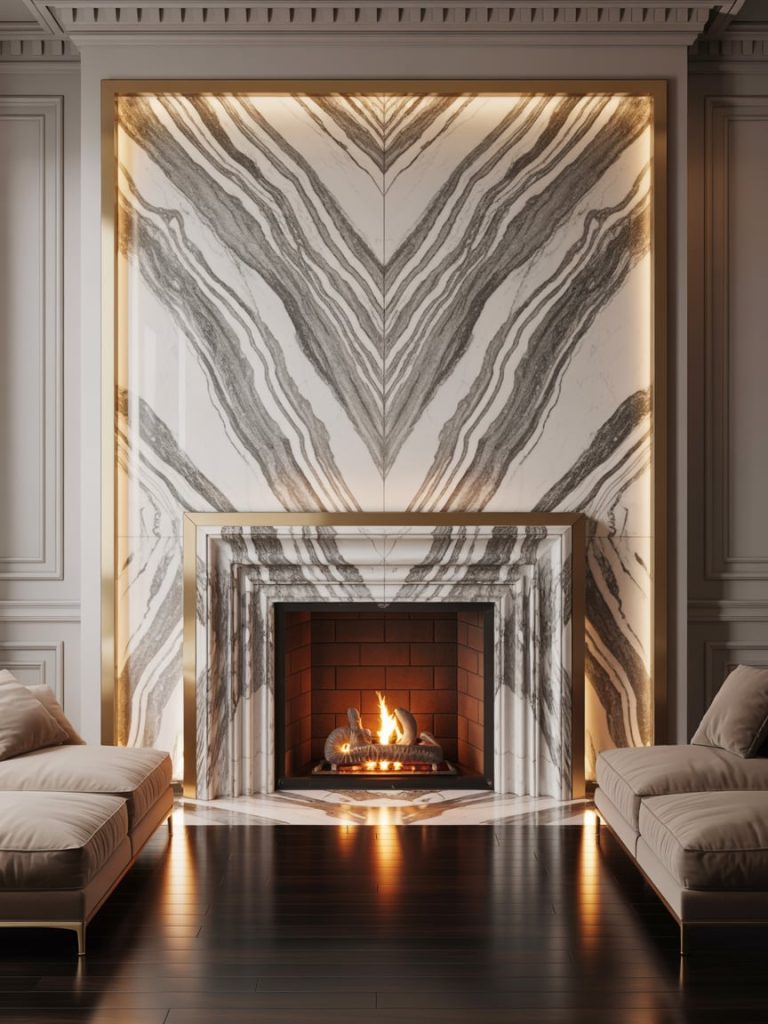
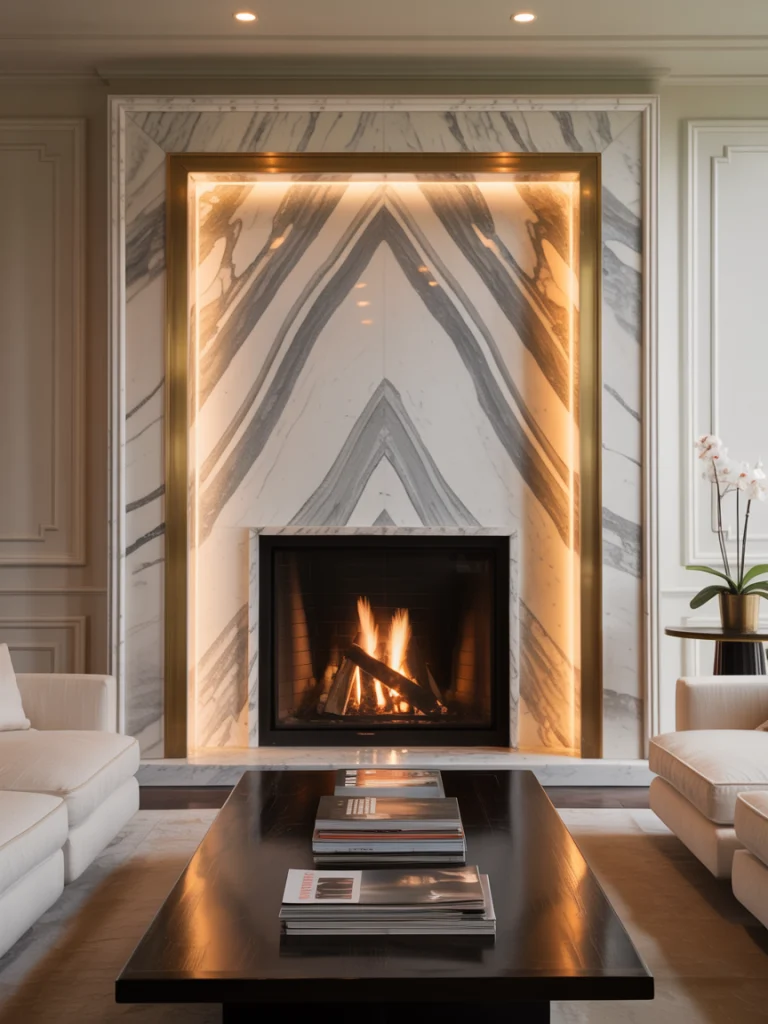
Pivoting Furniture Layouts for Events:
Modular luxury seating allows you to transform the room layout for different occasions. High-quality lightweight frames with slipcovered cushions can shift from intimate seating clusters to open party layouts without losing elegance.

Multi-Temperature Lighting Design:
Layer lighting temperatures for different moods: warm (2700K) for relaxation, neutral (3000K–3500K) for reading or work, and accent lighting for architectural highlights. This approach creates a flexible space that adapts to any activity.
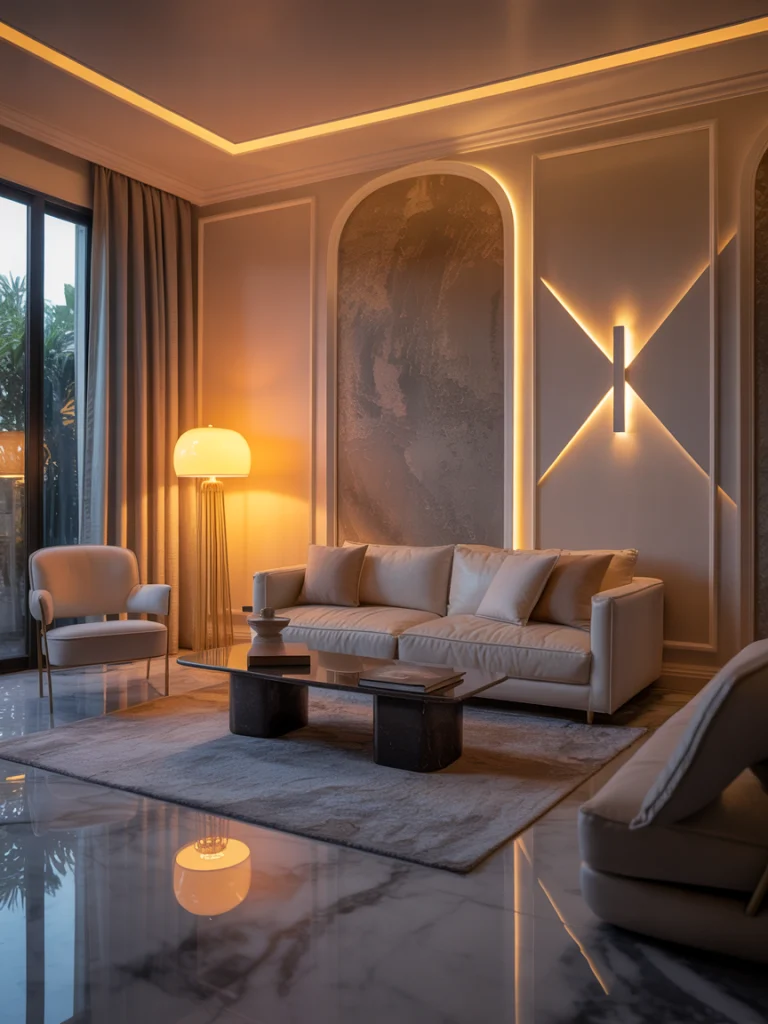
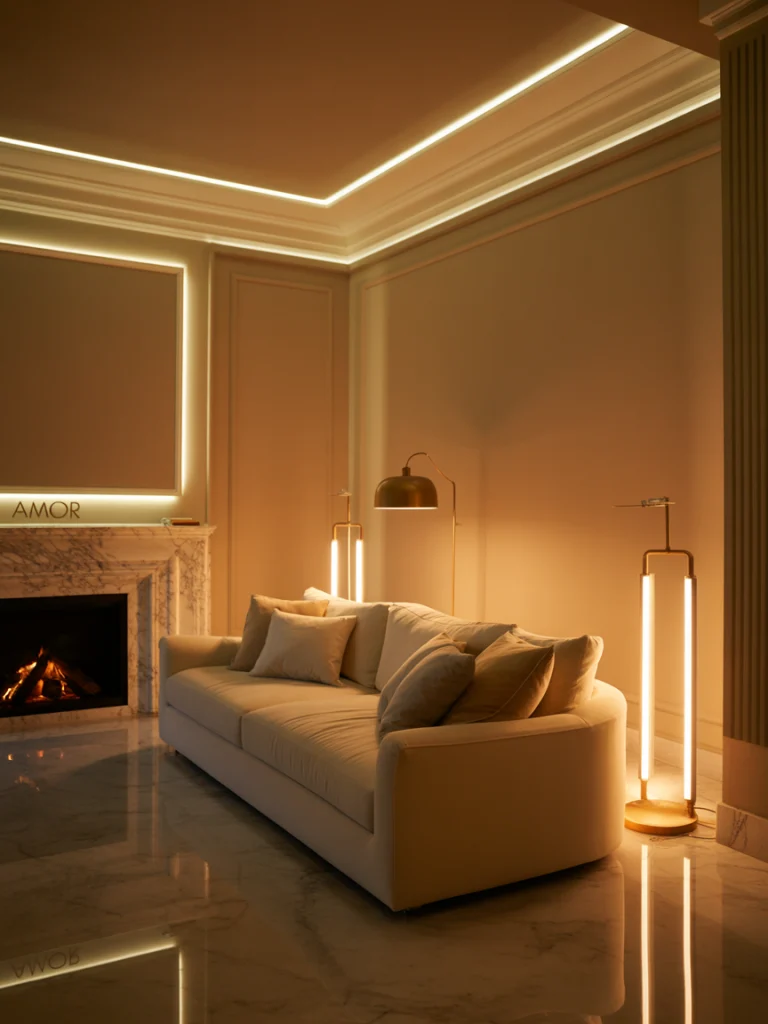
Statement Wallpaper in Unexpected Places:
Luxury wallpaper from brands like de Gournay or Fromental is often hand-painted on silk or linen. Use it not just on walls but on ceilings, inside alcoves, or behind shelving for an element of surprise and refinement.
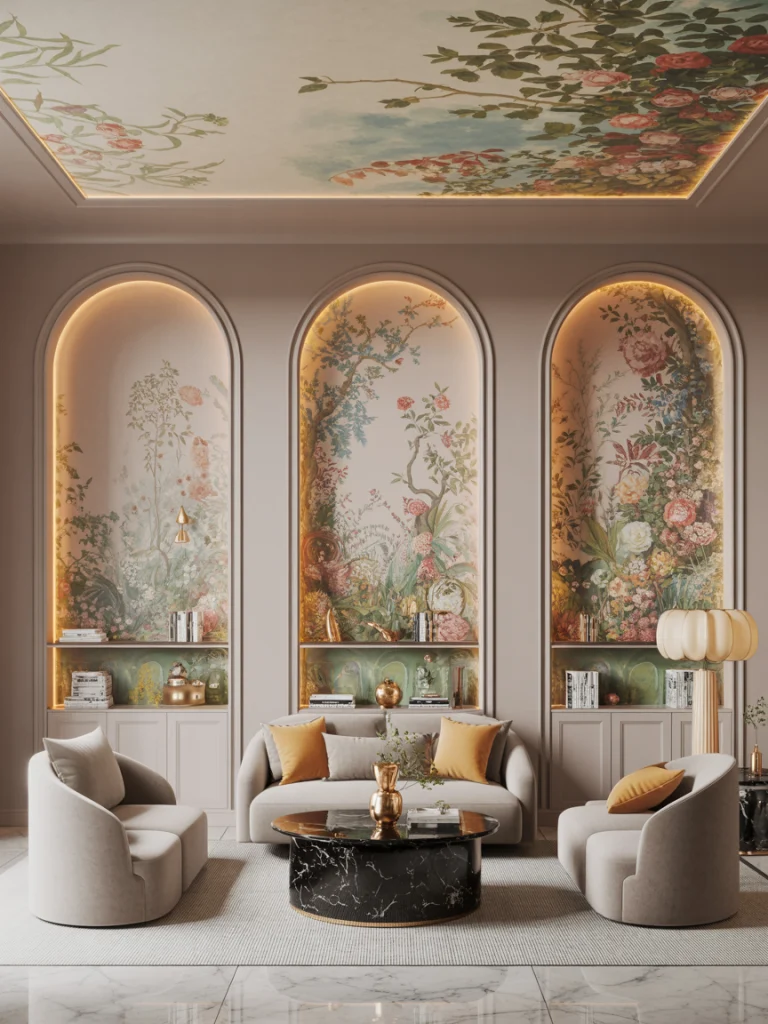
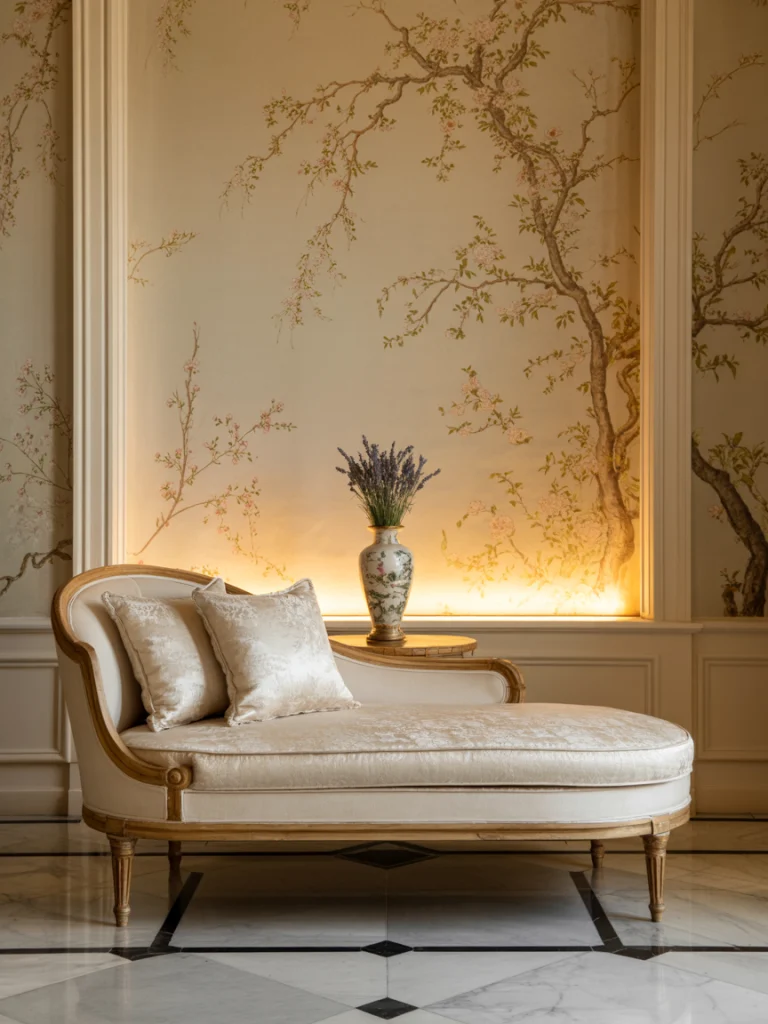
Artisanal Coffee Tables with Story:
A coffee table made by a local artisan or sourced from a boutique gallery becomes more than furniture; it becomes a talking point. The craftsmanship and backstory add intangible value that mass-market pieces cannot match.
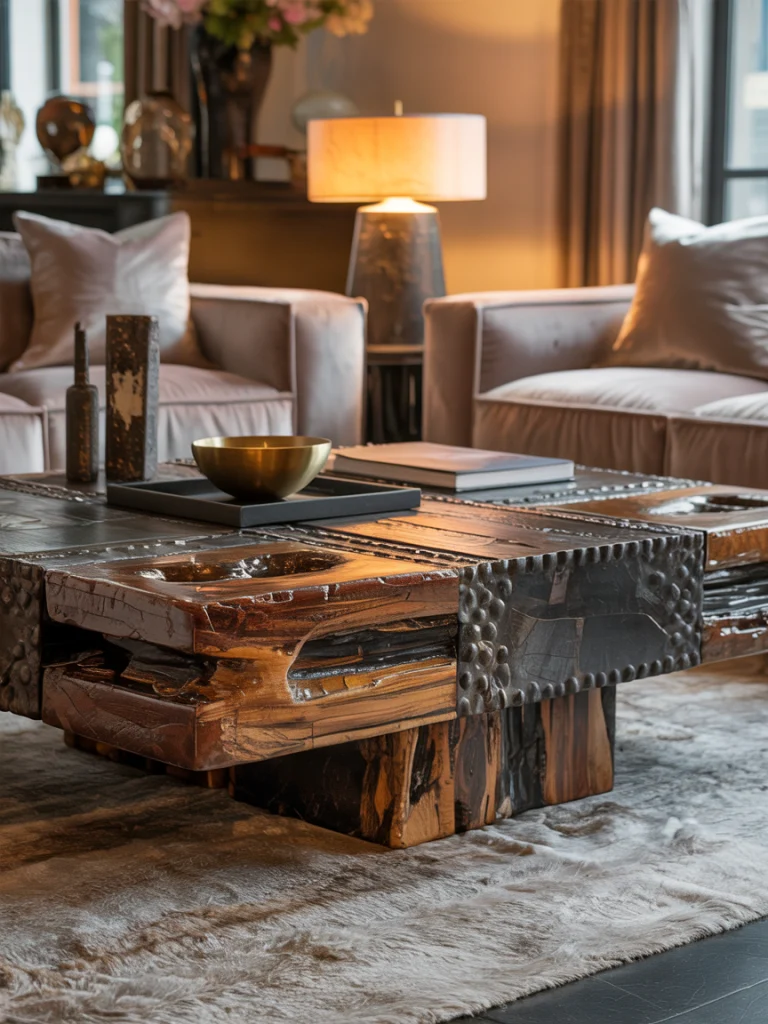
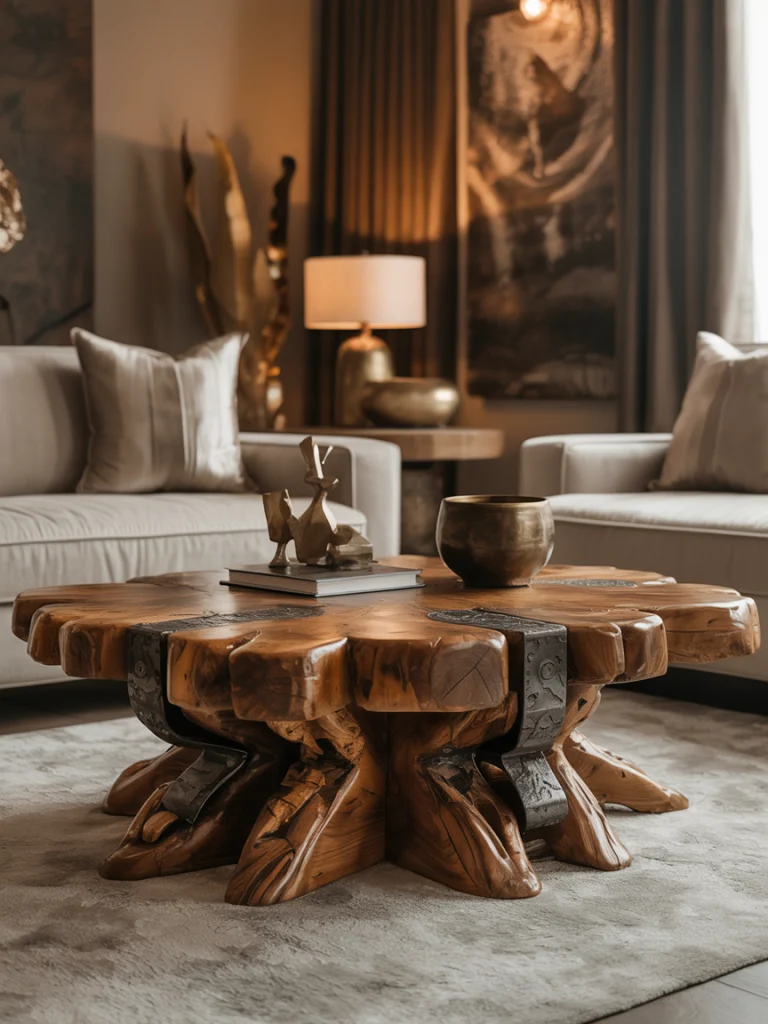
Multi-Layered Floor Coverings:
Layering a smaller patterned rug over a large neutral base adds visual depth and helps define zones in an open-plan room. This technique works especially well when mixing materials, such as wool over sisal.
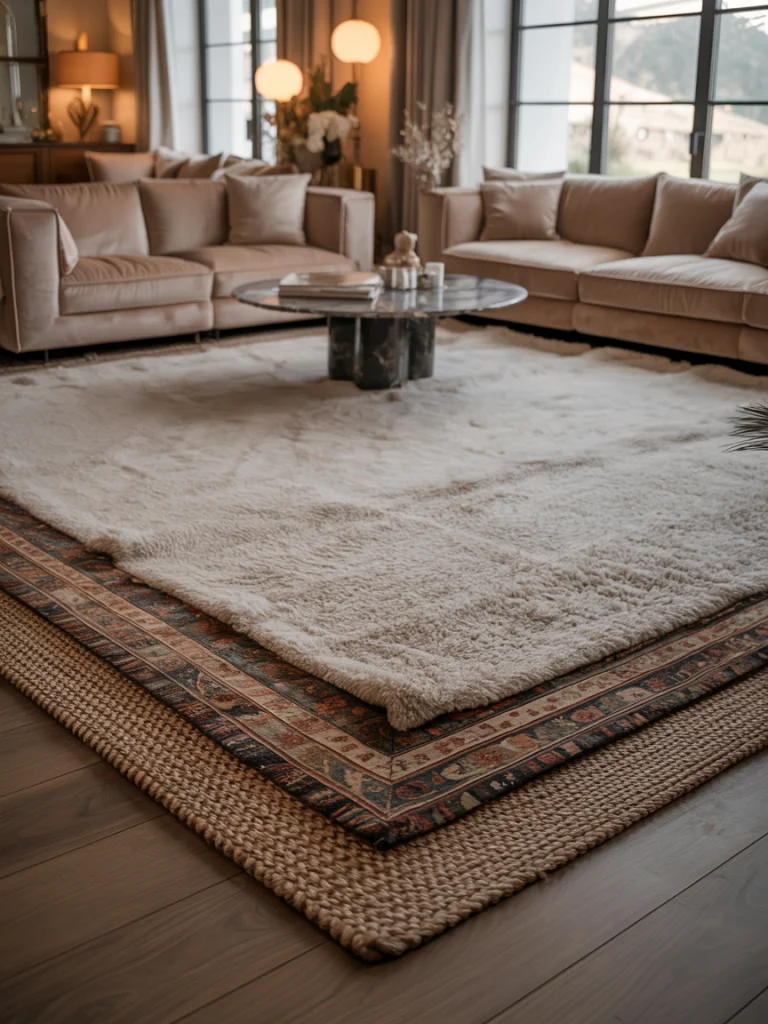
Fireplaces Framed with Metalwork:
Adding a slim bronze or blackened steel frame to a stone fireplace brings a tailored, architectural detail that feels both modern and timeless. It is a subtle way to upgrade without rebuilding the entire surround.
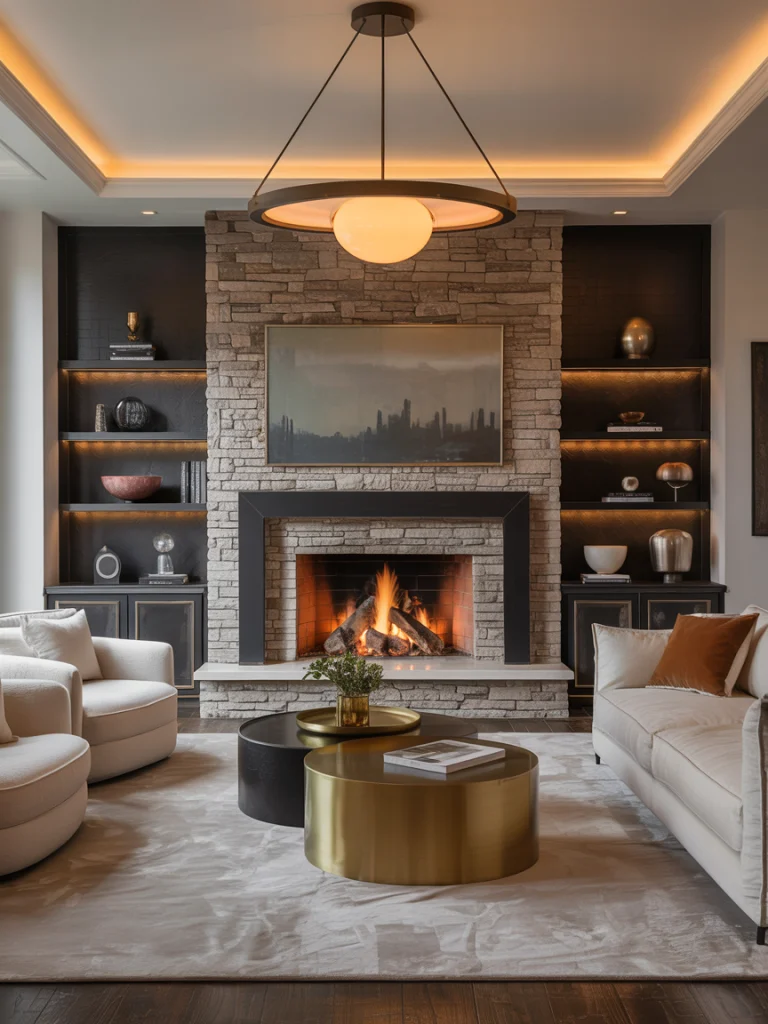
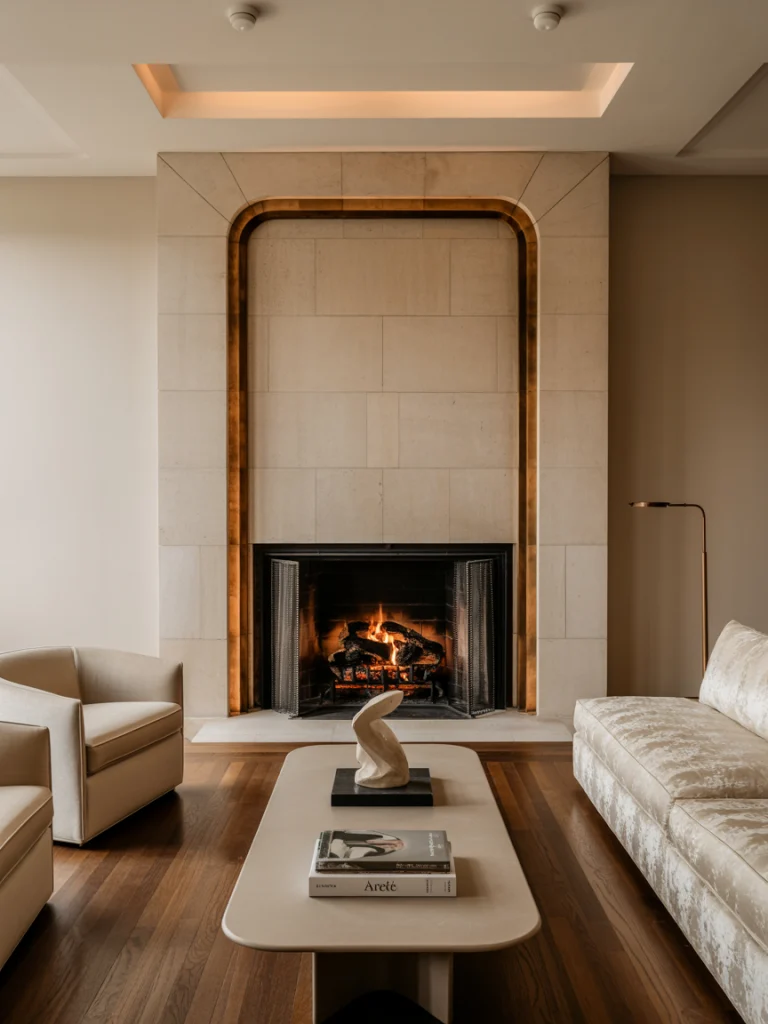
Dramatic Double-Height Curtain Drops:
In rooms with high ceilings, floor-to-ceiling curtains in silk or heavy linen add grandeur and improve acoustics. The vertical lines also draw the eye upward, emphasizing the room’s scale.
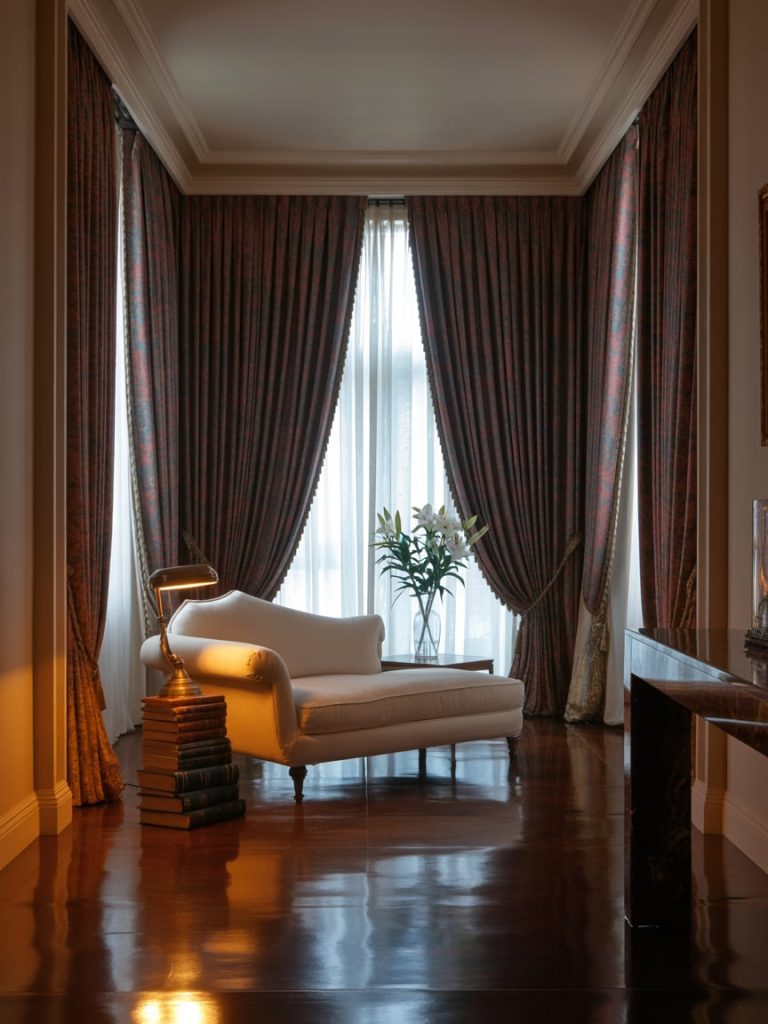
Acoustic Design Hidden in Decor:
Luxury rooms often hide acoustic panels inside artwork frames or fabric wall panels. This reduces echo and improves sound quality for conversation and media without sacrificing beauty.
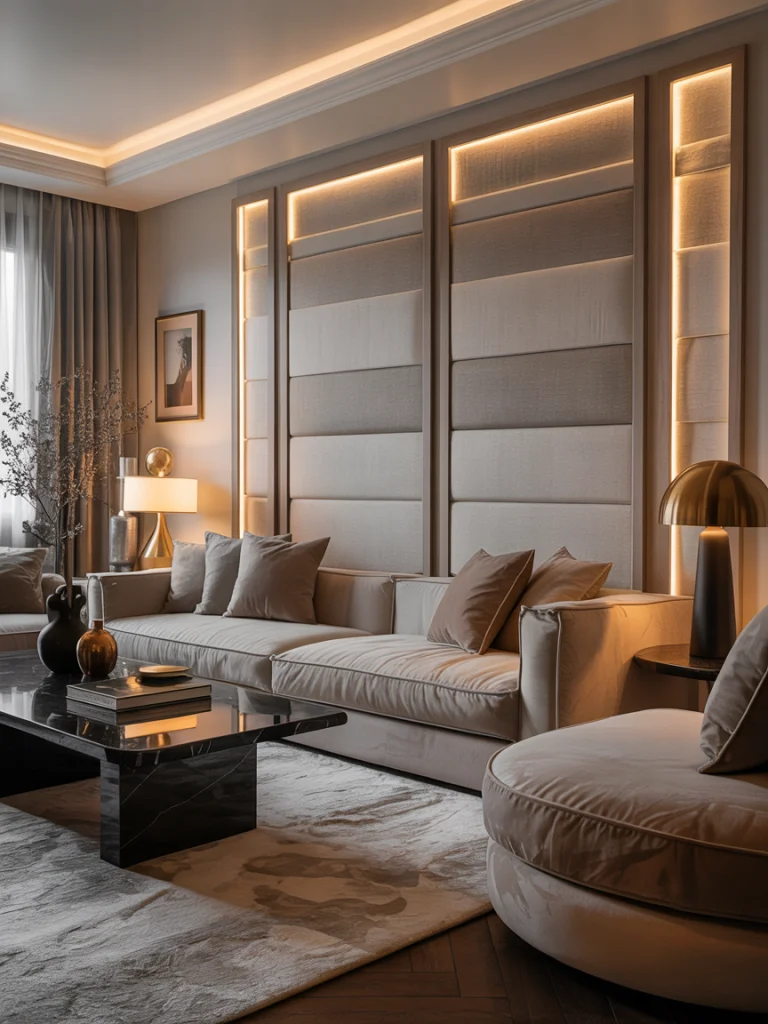
Scent Zoning for Different Experiences:
Luxury design engages all senses. Use citrus or herbal scents near windows for freshness, soft florals near seating for elegance, and deeper wood or spice notes near the fireplace for warmth. This subtle layering guides mood as you move through the space.
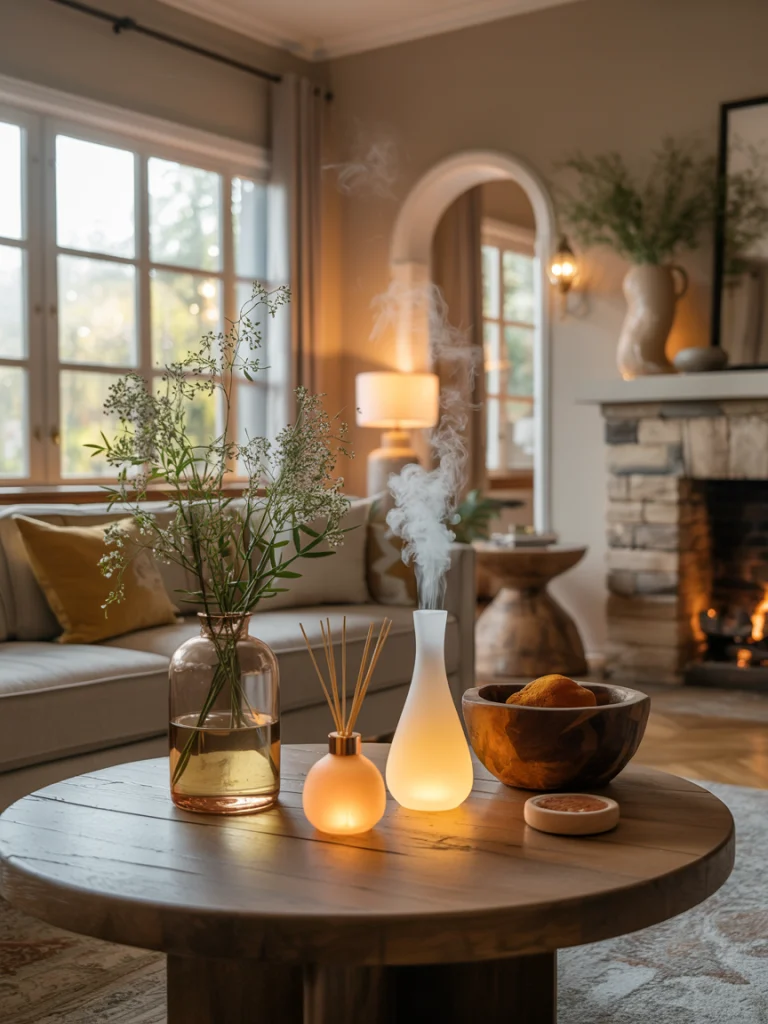
Disappearing Storage Solutions:
Custom cabinetry designed to blend into wall paneling keeps the room clutter-free. Whether hiding a media console, a bar setup, or seasonal decor, the goal is to maintain visual calm while keeping everything accessible.
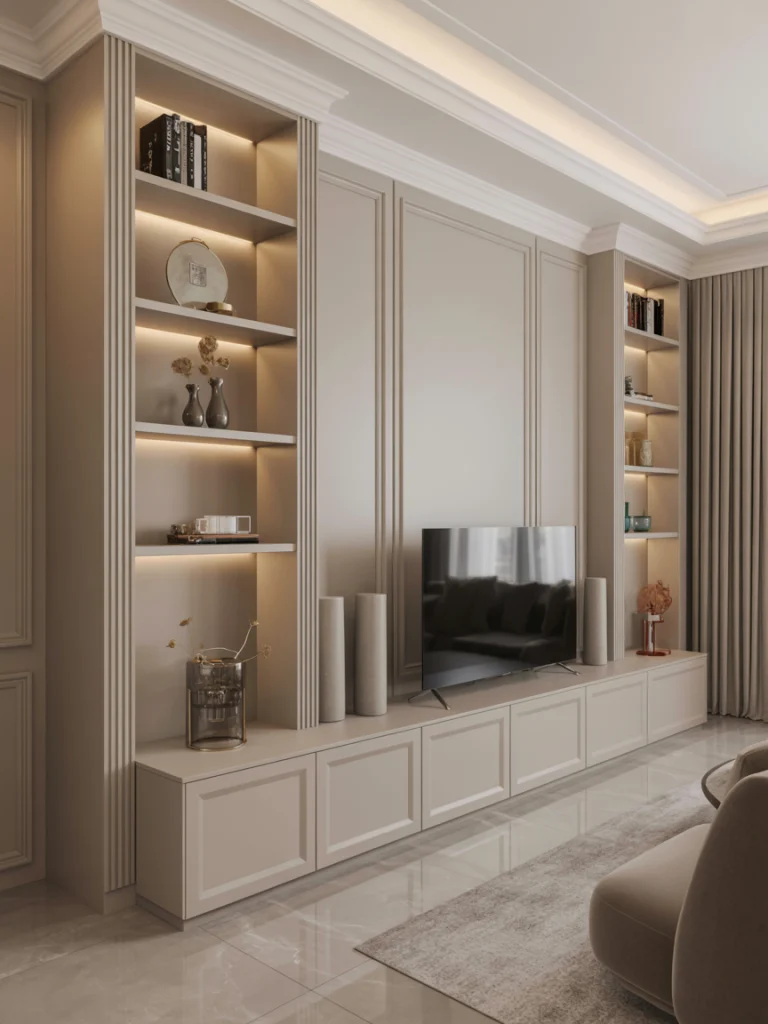
Final Word:
A luxury living room is more than a collection of expensive objects; it is a carefully orchestrated environment that balances beauty, comfort, and function. By combining these 25 trends, you can create a space that is not only visually stunning but also deeply satisfying to live in. Every texture, light source, and design choice should serve both the eye and the spirit, making the room feel as inviting as it is impressive.






